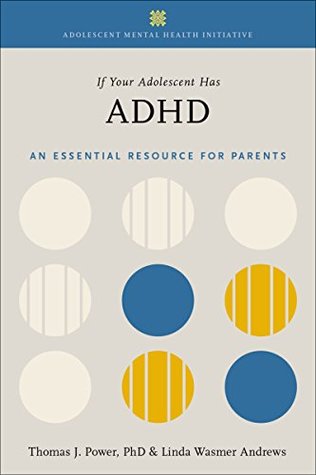Kindle Notes & Highlights
If Your Adolescent Has ADHD: An Essential Resource for Parents (Adolescent Mental Health Initiative)
Read between
January 29 - February 5, 2020
you read about the ABCs—antecedents, behavior, and consequences—of behavior change. Learning to apply the ABC approach effectively takes time and effort. Most parents benefit from getting some professional guidance at the outset and during difficult periods. With practice, however, many parents and teens become quite adept at collaborative problem-solving using the ABC framework.
“We’ve been having a hard time with this issue. Can we discuss what’s going on? Maybe we can come up with some ideas about how to improve the situation.
With an adolescent, however, it’s crucial to include your teen in the problem-solving process. A teen who isn’t on board with the plan is likely to sabotage it.
Eventually, you’ll need to narrow your focus to one or two target behaviors that you and your teen want to change.
Positive. Try to frame the target as something your teen needs to do more of, rather than less of. For example, let’s say the general problem is that your teen isn’t walking the dog after school. It’s better to state the goal as “walking the dog every afternoon” rather than “being less irresponsible
around the house.” •Important. Pick a behavior that’s significant enough to justify the work of changing it. Distinguish those behaviors that may be annoying or irritating to you from those that really make a difference to your family. As the saying goes, don’t sweat the small stuff. •Realistic. Select a behavior that you and your teen have a reasonable chance of improving. Particularly when you’re starting out, it’s helpful to pick a target behavior that’s important but not too difficult or controversial.
Ultimately, the target behavior should be mutually selected. It’s not just your idea. It’s something that your teen also agrees would be good to change. Reaching that kind of consensus may be easier if you spell out the benefits for your teen. You might say: “Not only can we address this problem that we’ve been having, but also you may be able to earn some privileges that you’ve been wanting. Let’s talk about what we can do.”
The second step in developing an ABC plan is considering the antecedents—things preceding a behavior that influence how likely it is to occur. By manipulating antecedents, you can set your teen up for success. Antecedents vary depending on the individual and the target behavior in question. Here are a few typical examples: •Physiological antecedents. Hunger and lack of sleep may lead to a bad mood, and that, in turn, may lead to uncooperative behavior. To set the stage for a better attitude, establish a household routine with regular times for eating meals, shutting off electronic devices
...more
The third step in developing an ABC plan is considering the consequences—things following a behavior that influence how likely it is to occur again. By managing consequences consistently and appropriately, you can encourage a desirable behavior or discourage an undesirable one. Consequences can be divided into four main categories: positive reinforcement, planned ignoring, strategic punishment, and negative reinforcement. When creating a collaborative ABC plan with your teen, focus most of your attention on positive reinforcement—rewards that increase the likelihood that a desirable behavior
...more


